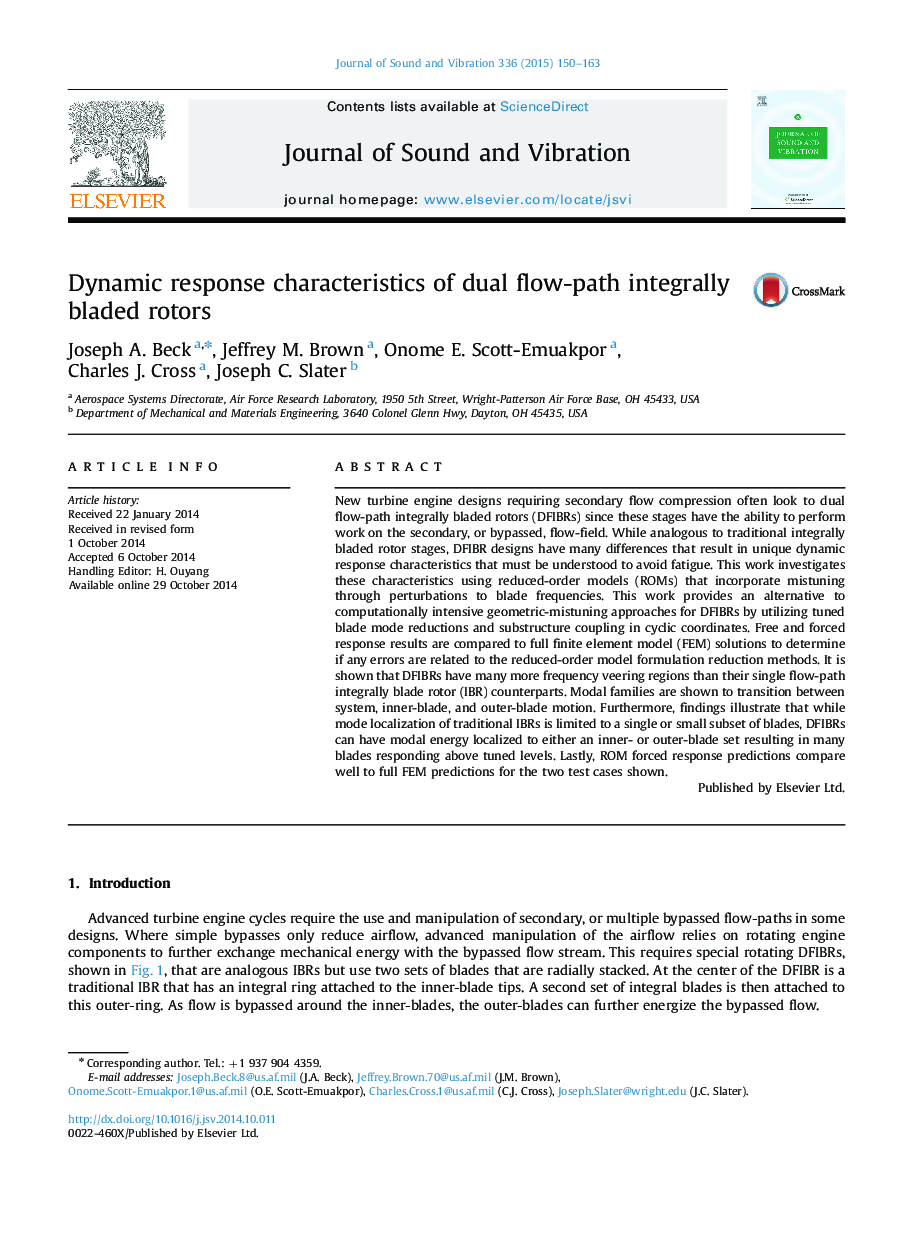| کد مقاله | کد نشریه | سال انتشار | مقاله انگلیسی | نسخه تمام متن |
|---|---|---|---|---|
| 287667 | 509579 | 2015 | 14 صفحه PDF | دانلود رایگان |
New turbine engine designs requiring secondary flow compression often look to dual flow-path integrally bladed rotors (DFIBRs) since these stages have the ability to perform work on the secondary, or bypassed, flow-field. While analogous to traditional integrally bladed rotor stages, DFIBR designs have many differences that result in unique dynamic response characteristics that must be understood to avoid fatigue. This work investigates these characteristics using reduced-order models (ROMs) that incorporate mistuning through perturbations to blade frequencies. This work provides an alternative to computationally intensive geometric-mistuning approaches for DFIBRs by utilizing tuned blade mode reductions and substructure coupling in cyclic coordinates. Free and forced response results are compared to full finite element model (FEM) solutions to determine if any errors are related to the reduced-order model formulation reduction methods. It is shown that DFIBRs have many more frequency veering regions than their single flow-path integrally blade rotor (IBR) counterparts. Modal families are shown to transition between system, inner-blade, and outer-blade motion. Furthermore, findings illustrate that while mode localization of traditional IBRs is limited to a single or small subset of blades, DFIBRs can have modal energy localized to either an inner- or outer-blade set resulting in many blades responding above tuned levels. Lastly, ROM forced response predictions compare well to full FEM predictions for the two test cases shown.
Journal: Journal of Sound and Vibration - Volume 336, 3 February 2015, Pages 150–163
